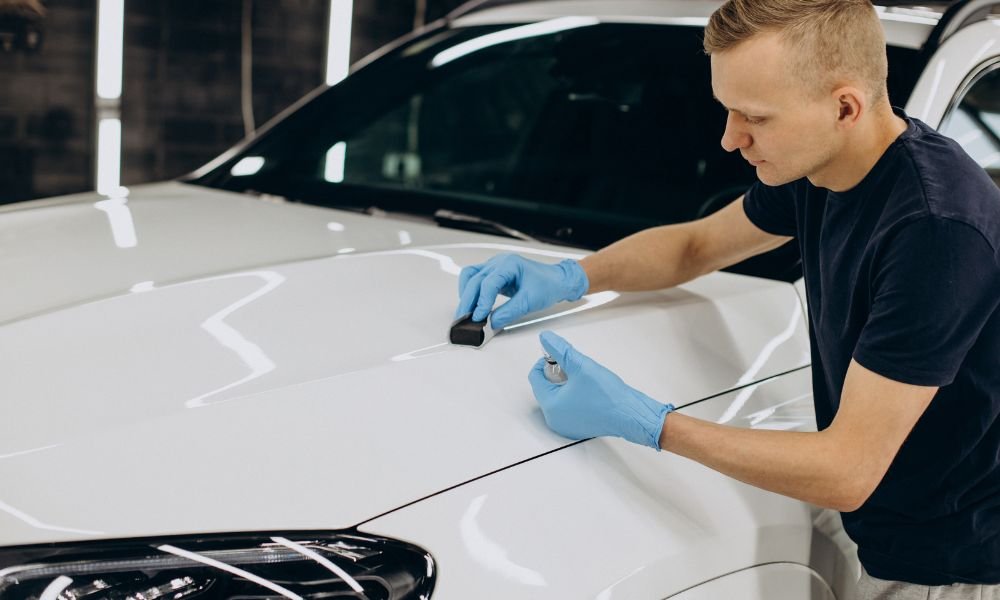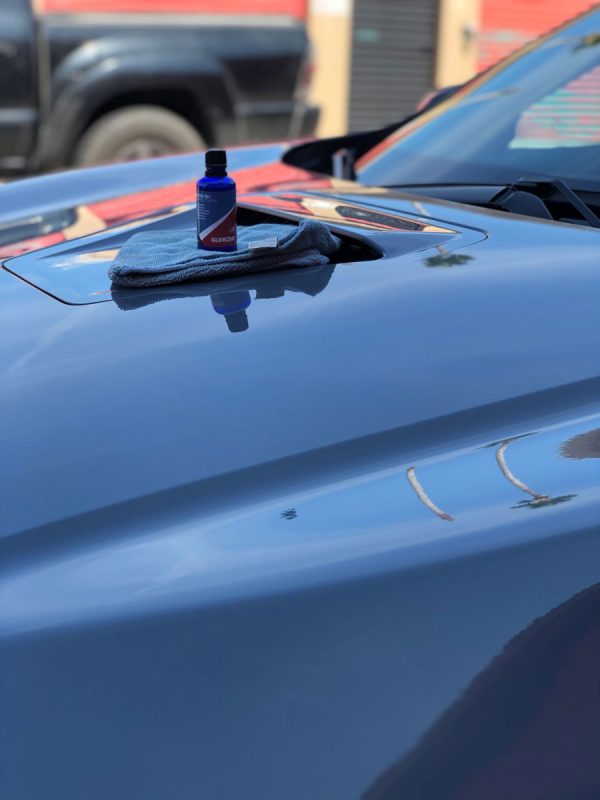The Relevance of Ceramic Coating: Safeguarding Your Vehicle's Outside With Accuracy
In an era where maintaining the visual and practical integrity of your lorry is extremely important, ceramic finish becomes a crucial option. This protective layer not just defend against ecological difficulties but additionally raises the visual appeal of your vehicle. With its one-of-a-kind bonding homes, ceramic finishing uses a level of protection that much exceeds traditional waxing techniques. Yet, exactly how exactly does it accomplish such remarkable results? As we discover the subtleties of its application and compare it to various other choices, one can not help however ask yourself about the specifics that make this innovation essential for contemporary car care.
Benefits of Ceramic Coating
When it comes to protecting an automobile's aesthetic allure, ceramic coating supplies considerable advantages. By forming a semi-permanent bond with the lorry's paint, ceramic layers properly stop oxidation and fading, guaranteeing that the vehicle maintains a shiny, showroom-like finish for an extended duration.
In addition to its safety top qualities, ceramic finishing offers impressive hydrophobic properties, creating water and other fluids to bead off effortlessly. This attribute simplifies the cleaning process, as dust and particles are much less likely to follow the surface area, lowering the frequency and effort required for maintenance. In addition, the layer's resistance to chemical spots from acidic contaminants like bird droppings and tree sap is an additional significant benefit, minimizing prospective paint damage.
Ceramic coatings additionally enhance scrape resistance, offering a layer that can absorb small abrasions and swirl marks. This quality is particularly advantageous in maintaining an immaculate surface area, minimizing the possibility of noticeable blemishes and preserving the honesty of the auto's paintwork gradually.

How Ceramic Layer Functions
Understanding the mechanics behind ceramic finish discloses its efficacy as a protective service for automobiles. Ceramic coverings are essentially fluid polymer applications that chemically bond with a car's manufacturing facility paint, developing a safety layer. This layer functions as a barrier versus ecological contaminants such as ultraviolet, crud, and dust rays, which can weaken a vehicle's exterior in time. The essential component in ceramic finishing is silicon dioxide (SiO2), which originates from quartz crystals and is known for its extraordinary firmness and toughness.
Application of ceramic finishing involves a thorough procedure. This shield enhances the cars and truck's gloss and hydrophobic residential properties, assisting in much easier cleaning by triggering water and contaminants to bead and slide off easily.
In addition, the covering's molecular framework provides resistance to minor scrapes and chemical discolorations. Unlike waxes or sealants that rest on top of the paint, ceramic coverings incorporate with the surface, using lasting defense. This integration is fundamental to its efficiency, ensuring the vehicle's surface continues to be excellent for several years.
Comparing Ceramic Coating to Alternatives
In the world of auto defense, ceramic coating stands as a formidable option when compared to traditional alternatives such as waxes and sealants. While waxes provide a short-term lustrous finish, generally lasting just a couple of weeks to months, ceramic coverings offer a longer-lasting service, typically withstanding for many years. This toughness is connected to the chemical bonding that happens when ceramic finishings are applied, forming a solid layer that is immune to ecological dangers.
Contrastingly, sealers, although more resilient than waxes, still drop brief of the robust protection supplied by ceramic layers. Sealers can typically last for up to a year, providing an artificial shield against particular aspects. However, they lack the premium hydrophobic residential properties and UV security that ceramic coatings supply.
In addition, ceramic finishings provide boosted scratch resistance, which neither waxes nor sealers can efficiently match (ceramic coating). This is specifically advantageous in preserving an automobile's pristine look. Additionally, ceramic coatings streamline upkeep efforts by reducing the adherence of dirt and grime, therefore helping with much easier cleaning. In recap, while conventional waxes and sealers provide basic security, ceramic coverings offer a comprehensive, long-lasting solution that considerably preserves the vehicle and improves's exterior coating.
Application Process Explained
Applying ceramic covering to a car requires a thorough procedure to make sure optimum outcomes and durability. When cleansed, the lorry is dried out and polished to eliminate any kind of blemishes, as any type of existing swirls or visit homepage scratches can become more pronounced after the covering is used.
Complying with surface area preparation, the application of the ceramic finish begins. Utilizing an applicator pad, the ceramic layer is applied in little areas to ensure even insurance coverage.
After application, the covering needs a specific treating duration, throughout which the vehicle must be protected from water and pollutants. This healing procedure can differ depending on the product however usually ranges from 24 to two days. Inevitably, this detailed process is critical in attaining a resilient and glossy surface.
Upkeep Tips for Long Life
To maintain the longevity of a ceramic coating, adherence to a regimented upkeep regimen is vital. Prevent automated vehicle cleans, as their harsh brushes can compromise the finishing's stability.
Post-wash, drying out the automobile with a tidy microfiber towel avoids water spots that may break down the finishing gradually. Furthermore, use a ceramic layer booster every couple of months. These boosters reinforce the hydrophobic buildings and improve the covering's safety capacities, ensuring it continues to be reliable versus contaminants.
Keep in mind that car parking areas play a vital function in upkeep. ceramic coating. Whenever possible, park in shaded locations to lessen UV exposure, which can progressively compromise the coating. For lasting storage, take into consideration utilizing a car cover for added defense against ecological elements
Verdict
In conclusion, ceramic layer serves as a critical protective layer for lorry exteriors, using long-lasting protection versus environmental aspects such as crud, uv, and dirt rays. site here By creating a semi-permanent bond with the paint, it enhances aesthetic allure while preserving the cars and truck's value. Its hydrophobic properties assist in easier upkeep, distinguishing it from different protective techniques. Understanding the application procedure and adhering to maintenance referrals are important for making best use of the longevity and efficiency of ceramic finish.
When it comes to preserving a car's visual allure, ceramic layer supplies substantial benefits. By developing a semi-permanent bond with the car's paint, ceramic finishes successfully avoid oxidation and fading, guaranteeing that the automobile maintains a shiny, showroom-like surface for a prolonged duration. Ceramic layers are essentially fluid click this site polymer applications that chemically bond with a car's factory paint, creating a safety layer. In summary, while traditional waxes and sealers provide basic defense, ceramic finishes present a comprehensive, lasting service that significantly boosts and protects the lorry's outside finish.
